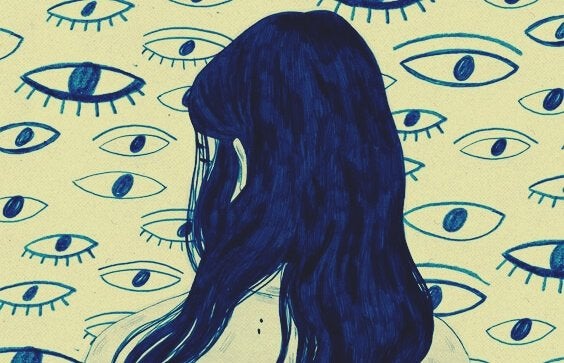If you’re an anxious person, you’ve probably noticed that anxiety changes our perception of what’s going on around us.
It is always important to note that there are essentially two types of anxiety: one is adaptive and its function is to prepare us for a danger or a threatening situation; that is, it is an instinctive response to protect us from potential risks.
- The other type of anxiety is psychological or pathological.
- This seems correct.
- Although there are no real risks.
- Perhaps it is more accurate to say that it is faced with imaginary or overrated threats.
- Almost always poorly defined.
- It is as if there is a danger.
- But we cannot determine.
- Where it is or what it is.
Anxiety is expressed in many ways. What these manifestations have in common is that the feeling of fear or apprehension is greatly exaggerated, which sometimes leads to a constant rumination of thoughts. At other times, it eventually triggers panic attacks or leads to isolation.
“Fear sharpens the senses. Anxiety paralyzes them, Kurt Goldstein?
In pathological anxiety there is a distorted or altered perception of the world, this means that you select or pay attention only to the reality information that explains or could explain the sense of threat, just as this information is misunderstood and we focus much more on it. than in other events.
Someone who, for example, feels anxious about their relationship with others will tend to see only certain aspects in them at the expense of others. You will always be very attentive to any gesture of rejection, even if it is minimal. Silence can be interpreted as an indication that you are not loved or that people do not want to talk to you. You will not appreciate signs of acceptance or interest, unless they are extraordinarily visible.
If the anxiety is more inaccurate, will the anxious person begin to see fateful signs?In any manifestation of nature. For example, a very colorful sunrise makes you feel like “something’s going to happen. “A bright moon generates fear, and he doesn’t know why.
Psychologist Michael Eysenck has developed a conceptual proposal called “Theory of the Four Factors”. It defines the main paths that an anxious person’s thinking travels according to his own perception. Each of these pathways involves cognitive biases. The four factors are:
Each of these manifestations of anxiety allows the person to see reality in a totally biased way, in anxiety there is a strong resistance or inability to introduce information that questions the validity of what they perceive.
All anxiety disorders can be treated, even in the most severe cases. Therapy designed to overcome these symptoms will teach the anxious person to focus on other aspects of reality that he or she does not know.
It is possible to learn to convey broader meanings than we believe. Sometimes we need someone to help us understand that having a beating heart doesn’t mean we’re on the verge of cardiac arrest. Or that it’s okay that some people don’t like us, but that doesn’t mean they intend to hurt us.
Any kind of anxiety is important. In fact, when we ignore the symptoms of anxiety as a coping strategy, they tend to grow and invade personality, seeking help quickly is the best way to deal with these states that cause us so much suffering.
Images courtesy of Henn Kim.

